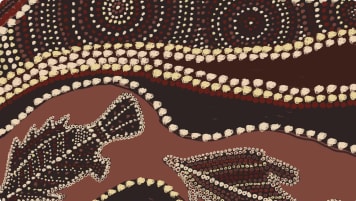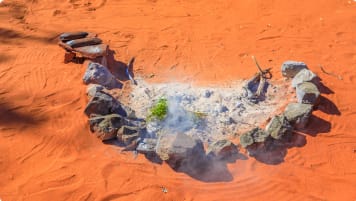Australian Aboriginal Paths of Migration
Article for small group tours of mature or senior couples or solo travellers interested in learning more about Aboriginal history, Kinship, trading routes, songlines and ancient history.
2 Jun 21 · 9 mins read

The Peopling of Australia
By Marco Stojanovik
Before Europeans reached Australia, there were probably already more than a million Aboriginal and Torres Strait islander people inhabiting the land. Their ancestors had been there for upwards of 60,000 years. Scientists have concluded from archaeological and other evidence that they first arrived from Southeast Asia through a series of hazardous sea voyages in primitive or ancient boats. At this point (and up to 10,000 years ago), sea levels were much lower and modern Australia was connected to Papua New Guinea, Tasmania, and some small islands of modern Indonesia in a mega-continent known as Sahul.
The most likely entry point to the continent was into New Guinea through Sulawesi, although a southern route through Bali, Timor and across the sea into the Kimberley region in Western Australia is also plausible (or possibly both). Either way, as populations grew, Australia’s Indigenous people continued to spread throughout the rest of the landmass.

But how did these first wave(s) of humans move across the continent and establish populations? Which were the first areas occupied? And how long did it take? Several attempts have been made to answer these questions, most notably by the anthropologists Josheph Birdsell, Sandra Bowdler, and David Horton. However, a lack of archaeological evidence means that no theory has yet to been proven conclusive.
Recent computer modelling based on existing archaeological sites may however have the answer. Conducted by the Australian Research Council Centre of Excellence for Australian Biodiversity and Heritage, the research shows the most likely routes taken by early Australians as they peopled the continent and suggests new sites where further archaeological evidence is likely to be found.
This article explores the results and implications of this research, after first delving into the key theories behind the peopling of Australia. It is intended as practical knowledge for a number of Odyssey Traveller small group tours in Australia, part of a continuing series of pieces on Aboriginal history, settlement, culture and art, and the ancient landscapes of the continent. For more information, readers are urged to take a look at Josephine Flood’s Archaeology of the Dreamtime: The Story of Prehistoric Australia and its People, as well as Corey Bradshaw and colleague’s journal article ‘Stochastic models support rapid peopling of Late Pleistocene Sahu’, each of which was used in the writing of this article.
Influential Theories on Aboriginal Migration
Since the 1950s several influential theories have been proposed to explain how Aboriginal people spread throughout Australia and how quickly (Flood 2004: 79-82).
Birdsell (1957) first speculated that people moved rapidly in all directions from their arrival point, but then populated the inland regions more quickly than the coasts. His reasoning was that because the drier inland regions could support fewer people than the well-watered coastal zones, the land’s carrying capacity would be reached sooner, and people would be forced to move on in search of a new foraging areas more frequently. His theory assumes that those people entering the continent had an adaptable economy that quickly utilised and adapted to the new continent’s resources and different environmental zones.
The theory also involves numerous assumptions about generation length, rate of reproduction and group size, all based on an estimated Australian Aboriginal population at time of European arrival of approximately 300,000. Using this information, he estimates it would have taken an initial colonising population of 25 individuals 2204 years to occupy and populate Australia and Tasmania.
Birdsell’s theory has been notably challenged on archaeological and environmental grounds. Analysing the known data from Australian archaeological research, Bowdler (1977: 105-246) proposed an alternative hypothesis in 1977 of a coastal colonisation of Australia before people then moved on to occupy the interior.
She theorises that the Aboriginal colonisers had an economy adapted to living on tropical coasts, and that the similarities between the edible tropical plants and coastal environments of the new continent and their departed homelands would have facilitated settlement. Their marine-based technology and economy – heavily reliant upon scale fish, small fish, and small animals – would not have had to change to exploit Australian coastal resources. As such the people could have gradually moved around the periphery of the continent and then expanded inland along major river and lake systems.

Bowdler suggests a slow pattern of settlement, with the dry heart of the continent occupied much later once a broadly based or terrestrial economy had developed. The people would have first had to develop techniques to hunt unfamiliar terrestrial animals such as large kangaroos and begun to use grindstones and exploit grass seeds as food. This would have occurred around 12,000 years ago.
A peripheral distribution of Pleistocene archaeological sites in Australia at the time seemed to support Bowdler’s theory. Known sites tended to be either on or near the coast or lie up major river valleys and the associated lake systems such as the Willandra Lakes in the Murray-Darling basin. However, only a small number of Pleistocene sites (15) had a known dated chronology at the time of the theory’s formulation; and little archaeological work had been done in the centre of the continent which might support or refute it.
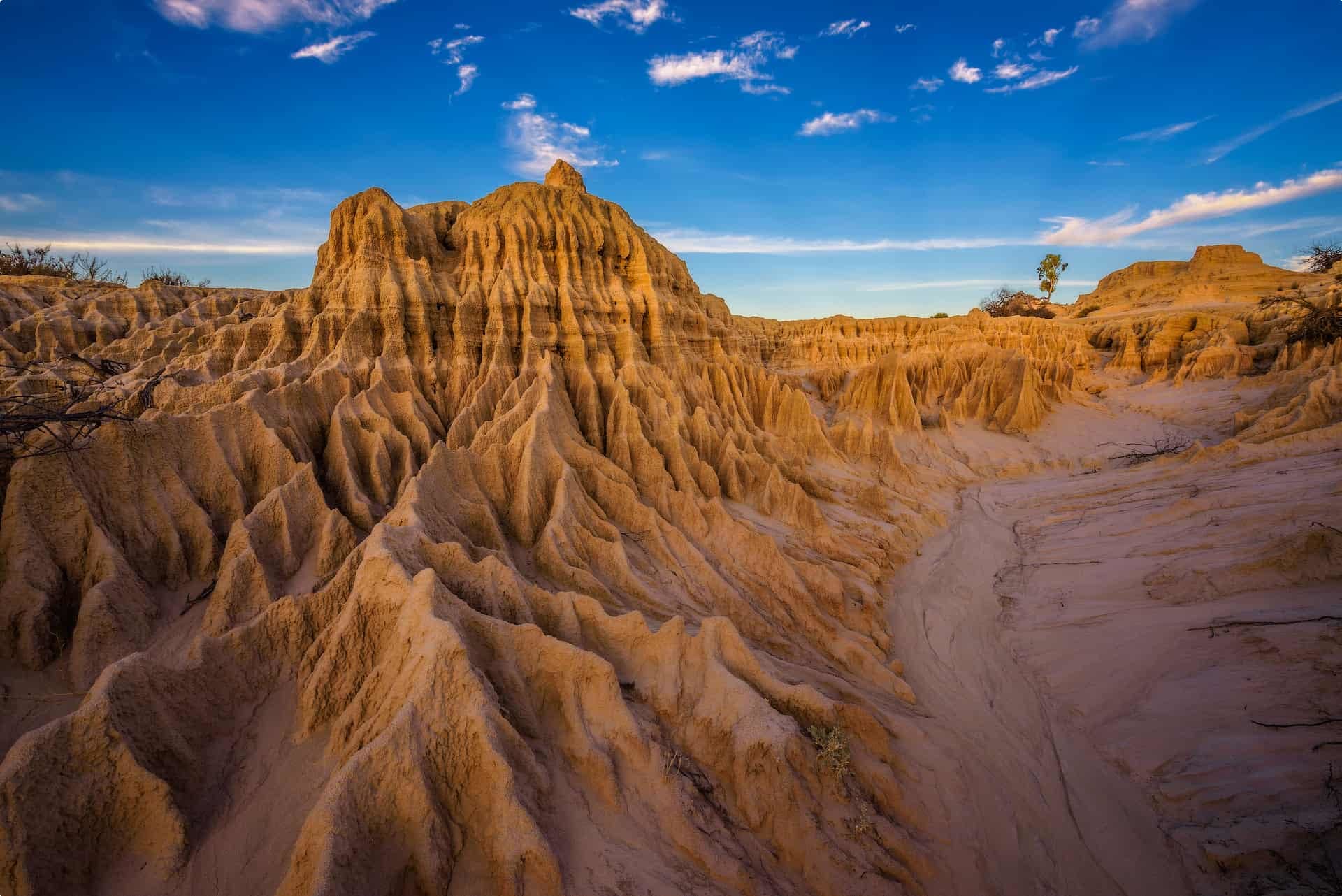
Horton (1981: 22) has suggested Bowdler’s theory of coastal colonisation is limited by her definition of economy, especially the premise that the first arrivals had an exclusively coastal economy until c. 12,000 years ago. He also suggests that Bowdler, as with Birdsell, failed to take into account the changing climatic conditions of the greater Australian continent.
He argues that people with an adaptable all-purpose economy moved into Australia through the relatively wetter northern and eastern inland woodlands along riverine corridors and then the coast. By 25,000 years ago all but the arid core of the continent would have been penetrated. At this point Australia began to dry up and Horton believes that the megafauna became extinct, and the people retreated to the coastal regions, not moving back until the present climate was established about 12,000 years ago.
Norman Tindale (1981: 1763-97) also believed that initial migration penetrated southwards on both sides of the Great Dividing Range. Present archaeological evidence, however, supports neither this nor Horton’s theory.
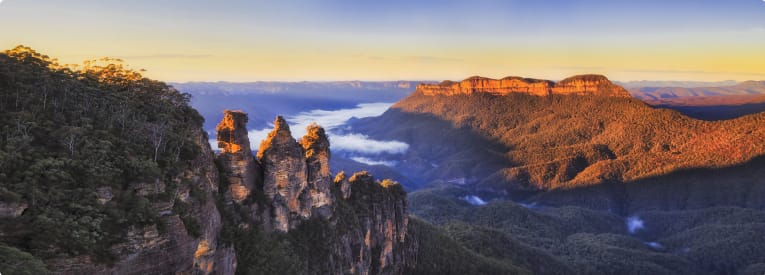
Computer Modelling of ‘Super-highways’
Recent studies have reworked the various earlier theories to consider a range of biogeographical, ecological, and sociological determinants. Most notable is the 2021 computer modelling conducted by researchers at the Australian Research Council Centre of Excellence for Australian Biodiversity and Heritage.
They argue that “human decision-making in new landscapes can lead to distinct patterns of movement that are detectable via advanced computational methods”. These methods account for the ways that geography and ecology provided constraints to, or opportunities for, movement; the demographics of the travellers; and the choices people made to explore open space.
As such, they incorporate how navigation would have been made based on prominent land features, the physiological capacity of people travelling on foot, how difficult the terrain was to traverse, and the distribution of available freshwater sources in a largely arid continent.
Putting all these different bits of information together into a mega-model, the researchers identified a network of more than 125 billion possible pathways across the continent. Each route represents the most efficient way to move from one location to another.
This was then whittled down to the most likely to have been used by first peoples. To do this, they compared all plausible pathways with the distribution of the earliest known archaeological sites on the Sahul continent. Weighted probabilities thus resulted for each path, scaling from the “most likely” to the “least likely” chosen paths.
Many of the billions of paths less likely to be chosen were discarded, allowing the researchers to focus on those that were the most probable. These most likely pathways have been called the ‘super-highways’ of Indigenous movement, while the next most likely routes have also been mapped (see video below).
Several of these super-highways correlate strongly with well-documented Aboriginal trade routes criss-crossing the country. This includes Cape York to South Australia via Birdsville in the trade of pituri native tobacco, and the trade of Kimberley baler-shell into central Australia. They also showed a striking similarity with the most common trading and stock routes used by early Europeans, which also followed the already well-known routes established by Aboriginal peoples.
The researchers have suggested such “strong similarities might suggest an extraordinary persistence of routes across the entire period of human occupation of Australia”.
In all, the results lend support to the hypothesis that movement in Sahul during this period was dispersed inland. The models do not indicate a preference for coastal environments, with people travelling along water sources and navigating by prominent landscape features.
The models suggest then that people settled in a wide range of environments and climatic zones, first in inland grasslands and rainforests, before spreading to savannas, deserts, and alpine regions. Only the most extreme arid environments of Sahul’s interior formed barriers to movement.
Another revealing insight provided by the modelling is the rapid rate that people could have spread across the entire continent of Sahul. It showed that this could have been biologically and ecologically feasible within as few as 150-200 generations (or 4370-5600 years). This is very fast by the standards of early human movement around the globe and is quite impressive considering the continent was around 11 million square kilometres at the time.
Future Implications of the Computer Modelling
The researchers are now using the modelling to look towards the future. The routes identified suggest potential target areas where archaeological evidence is likely to be found. The researchers “recommend that future archaeological prospection focus on where modern shores intersect major ancient corridors and along the identified superhighways transecting the continent”.
Many of the predicted site are not located underwater, in areas of Sahul which have since gone under the sea. This is an under-explored area of Australian archaeology, logistically challenging, although not impossible with the use of modern technologies.

The researchers’ conclusions could also have important implications on a global scale. Applying the same rules used in the modelling could shed light on the migrations of anatomically modern humans in the late Pleistocene. It could answer how these people moved out of Africa and proceeded to inhabit the rest of the planet.
The work might even have implications for humanity’s future, if large scale migrations are required due to climate change. According to the researchers, “Learning from those who have been present in Sahul from more than 60,000 years ago could help us anticipate migration patterns in the future”.
Tour of Aboriginal Australia
Travellers with an interest in learning more about the Aboriginal heritage of Australia may want to check out our various outback Australia tours.
These include visits to:
- Archaeological sites including the Madjedbebe rockshelter and the extensive collection of ancient Aboriginal rock art at Kakadu National Park as part of our tour of Kakadu and Darwin
- The ancient indigenous sites including Lake Mungo and the Budj Bim Cultural Landscape as part of our tour of the Southern States of Australia;
- The important cultural site of Wilpena Pound on our tour of the Flinders Ranges;
- The ancient rock art in the Kimberley, Western Australia;
- The Brewarrina Fish Traps in outback Queensland;
- Uluru and Kata Tjuta in the Northern territory.
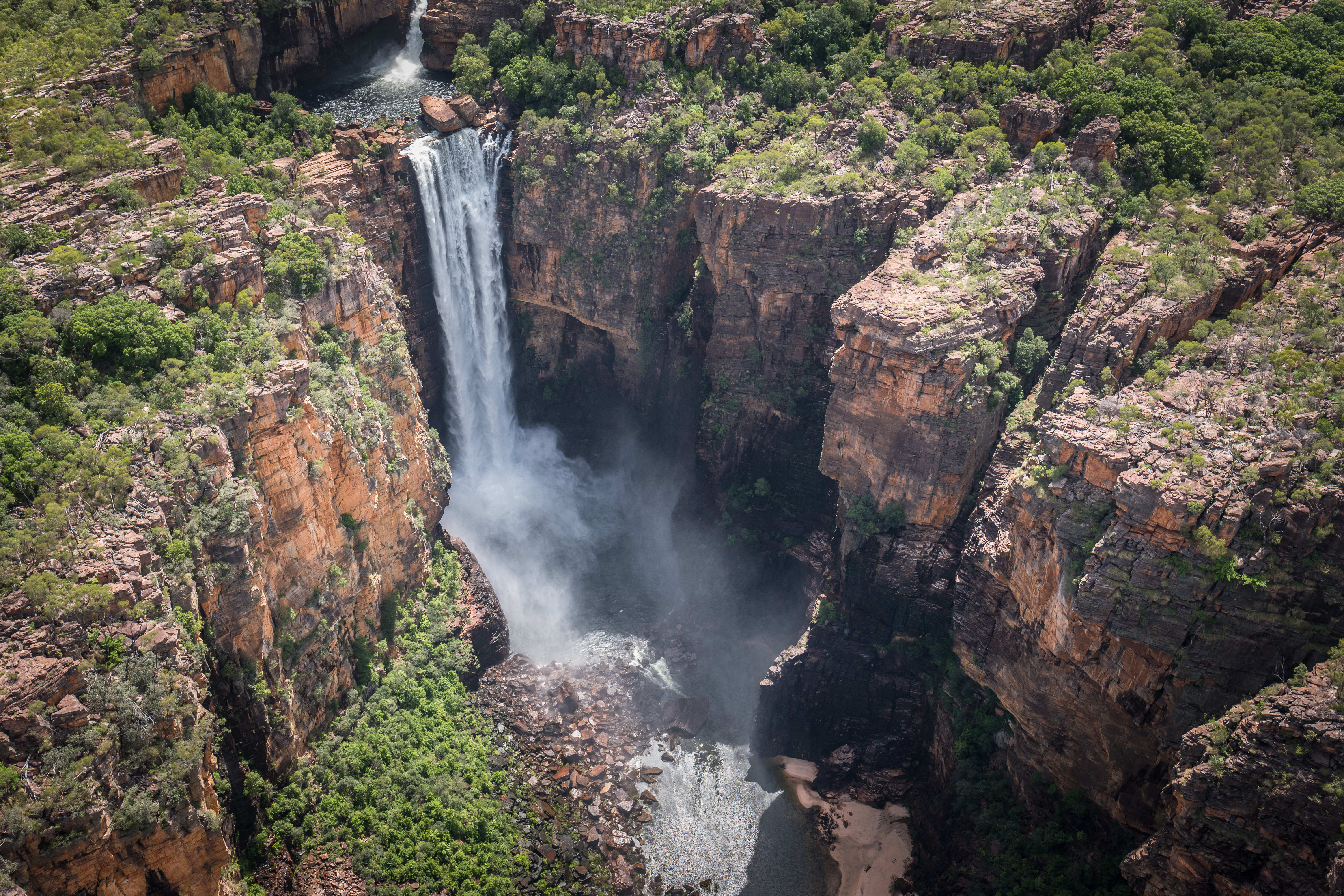
Every Odyssey guided tour is designed especially for mature and senior travellers, who want an authentic and informed experience of their destinations. Our tours aren’t the typical tourism Australia holiday – Blue Mountains, the Great Barrier Reef, and the penguin parade on Port Phillip Island. Instead, we pride ourselves on getting of the beaten path and making you think about Australia and New Zealand in new ways. We move in genuinely small groups – usually 6-12 per tour – and all tours are cost-inclusive, encompassing accommodation, attraction entries, and transport. For more information, click here, and head to this page to make a booking.
Articles about Australia published by Odyssey Traveller:
- The Kimberley: A Definitive Guide
- Uncovering the Ancient History of Aboriginal Australia
- Aboriginal Land Use in the Mallee
- Understanding Aboriginal Aquaculture
- Mallee and Mulga: Two Iconic and Typically Inland Australian Plant Communities (By Dr. Sandy Scott).
- The Australian Outback: A Definitive Guide
- The Eyre Peninsula: Australia’s Ocean Frontier
- Archaeological mysteries of Australia: How did a 12th century African coin reach Arnhem Land?
For all the articles Odyssey Traveller has published for mature aged and senior travellers, click through on this link.
External articles to assist you on your visit to Australia:
- John Mulvaney: ‘… these Aboriginal lines of travel‘
- Queensland Historical Atlas: Aboriginal dreaming paths and trading ways
- National Museum Australia: Trade with the Makasar
- Fish traps and stone houses: New archaeological insights into Gunditjmara use of the Budj Bim lava flow of southwest Victoria over the past 7000 years
- Isabel McBryde: Exchange in south eastern Australia
- Shells, not pearls, were the real prize in traditional Aboriginal culture
We acknowledge Aboriginal and Torres Strait Islander peoples as the First Australians and Traditional Custodians of the lands where we live, learn and work. We pay our respects to Elders past, present and emerging.
Related Tours

days
Jun, Jul, Sep, Feb, Mar +1Darwin and Kakadu small group tour
Visiting Northern Territory
Explore and learn as part of a small group tour for seniors on this package tour to Darwin and Kakadu National park, a UNESCO world heritage site. This program also visits Arnhem land. Our focus is on ecology, landscapes and history on this 14 day program in the far north of the Northern Territory.

14 days
May, Jun, Jul, Aug, SepSmall group tour of Australia's Kimberley
Visiting Western Australia
Escorted small group tour of the Kimberley. We explore and visit The Bungles, Bell Gorge, Mitchell plateau & Halls Creek in the dry season. Amazing landscapes intertwined with Aboriginal communities resident more than 45,000 years.
From A$15,390 AUD
View Tour
days
Apr, May, Jun, Jul, Aug +3Small group tour exploring Alice Springs and Uluru-Kata Tjuta National Park
Visiting Northern Territory
Explore and learn about historic Alice Springs, The MacDonnell ranges, and Uluru-Kata Tjuta National Park. This escorted small group tour for mature and senior travellers, travelling as a couple or solo travellers also visits the Hermannsburg Lutheran mission plus Henbury meteorite site learning about the Aboriginal outback and contemporary art.

days
Apr, Jun, Aug, Nov, Mar +2Exploring Alice Springs and Uluru-Kata Tjuta National park by Motorbike
Visiting
Explore on a Motorbike tour in the Outback and learn about historic Alice Springs, The MacDonnell ranges, and Uluru-Kata Tjuta national park. This escorted small group Motorbike tour for mature and senior travellers, travelling as a couple or solo travellers also visits the Hermannsburg Lutheran mission plus Henbury meteorite site learning about the Aboriginal outback and contemporary art.

days
Mar, May, Aug, Sep, Oct +2Small group tour of World Heritage sites and more in the Southern States of Australia
Visiting New South Wales, South Australia
Discover the World Heritage Sites of the southern states of Australia travelling in a small group tour. A journey of learning around the southern edges of the Murray Darling basin and up to the upper southern part of this complex river basin north of Mildura. We start and end in Adelaide, stopping in Broken Hill, Mungo National Park and other significant locations.

days
Feb, Mar, May, Jul, Sep +2Guided small group motorcycle tour of World Heritage sites in Victoria and South Australia
Visiting
Discover the World Heritage Sites of the southern states of Australia travelling in a small group tour of like minded motorcyclists. A journey of learning around the southern edges of the Murray Darling basin and up to the upper southern part of this complex river basin north of Mildura. We start and end in Adelaide, stopping in Broken Hill, Mungo National Park and other significant locations.
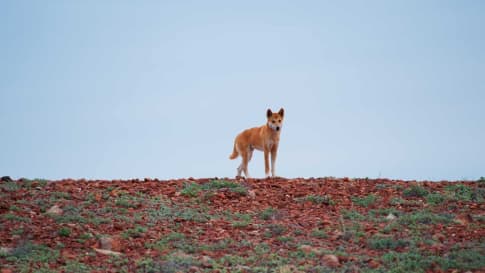
days
Apr, May, Jul, Aug, Oct +2Small group tour of Australia's Flinders ranges
Visiting South Australia
Escorted small group tour of the Flinders range in South Australia from Adelaide. Learn about Coober Pedy, Wilpena pound and water system of Lake Eyre as we explore and learn also about the history of the people who explored the Flinders.
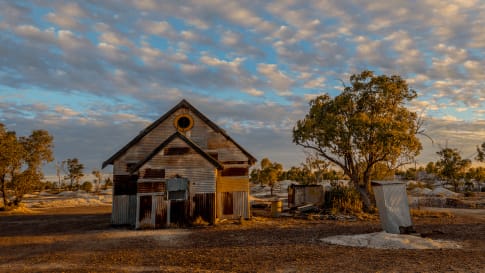
days
Mar, Apr, May, Jul, Aug +2Small group tour of outback Queensland
Visiting New South Wales, Queensland
To Dubbo and back, this small group tour takes you to learn about the Brewarrina fish traps, we travel high up into North Queensland to see the Dinosaurs of Winton and incredible Aboriginal rock art at Cathedral gorge and learn about opal mining and the history of Lightning ridge.
Articles
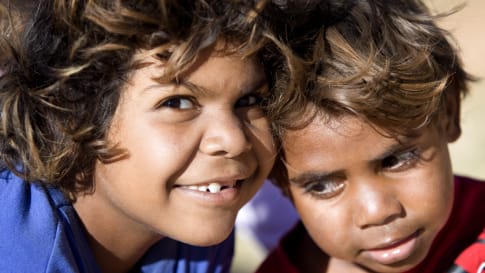
Aboriginal Kinship systems
Article about Aboriginal kinship to assist small group tours in Australia understanding Ancient aboriginal society and the contemporary view. Kinship influences the relationships including aboriginal trading routes.

Aboriginal Songlines
Songlines trace the journeys of ancestral spirits who created the land and all natural phenomena. The creation stories as well as practical knowledge needed for survival in outback Australia. We experience this knowledge on our small group tours into Outback Australia.

Ancient Aboriginal trade routes of Australia
Ancient Aboriginal trade routes of Australia Trade was a central part of life for Aboriginal people prior to the British settlement of Australia. Trading routes criss-crossed the nation, dispersing goods, information, technologies and culture thousands…

The Arrival of Aboriginal Australians on the Continent
Tracing Aboriginal history via an outback small group tour for mature and senior couples or solo travellers provides an intriguing learning platform about Australia, rock art, trading and culture that traces a history possibly some 120,000 years ago.

The Australian Outback: A Definitive Guide
Explore learn and consider what is the outback in this article. For mature and senior travelers considering joining a small group package tours into the outback to see, learn and explore about this unique place, not only the landscape but the Aboriginal approach to living. On each of the tours for couples and the single traveler you learn something different but fascinating, from Outback Queensland, the Flinders, Broken Hill and the Kimberley and the wildflowers all contribute to this question, what is the outback?
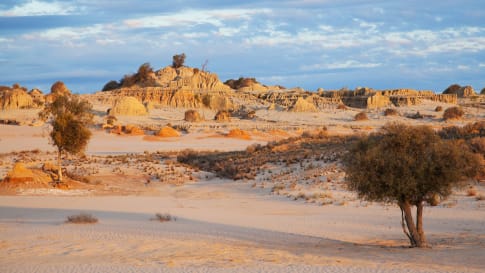
Uncovering the ancient history of Aboriginal Australia
For small group escorted tours of Australia in Queensland, Victoria, New South Wales, South Australia, Tasmania, Western Australia and the Northern Territory a guide on Aboriginal culture for mature and senior travellers.

Understanding Aboriginal aquaculture
Aboriginal communities had the ability to harvest fish some 20,000+ years ago. Creating major centres of trade and cultural exchange, and supported permanent communities. Discover and learn more on a escorted small group package tour to Victoria, South Australia & Queensland for mature and senior travellers, couples and solo travellers interested in learning.
